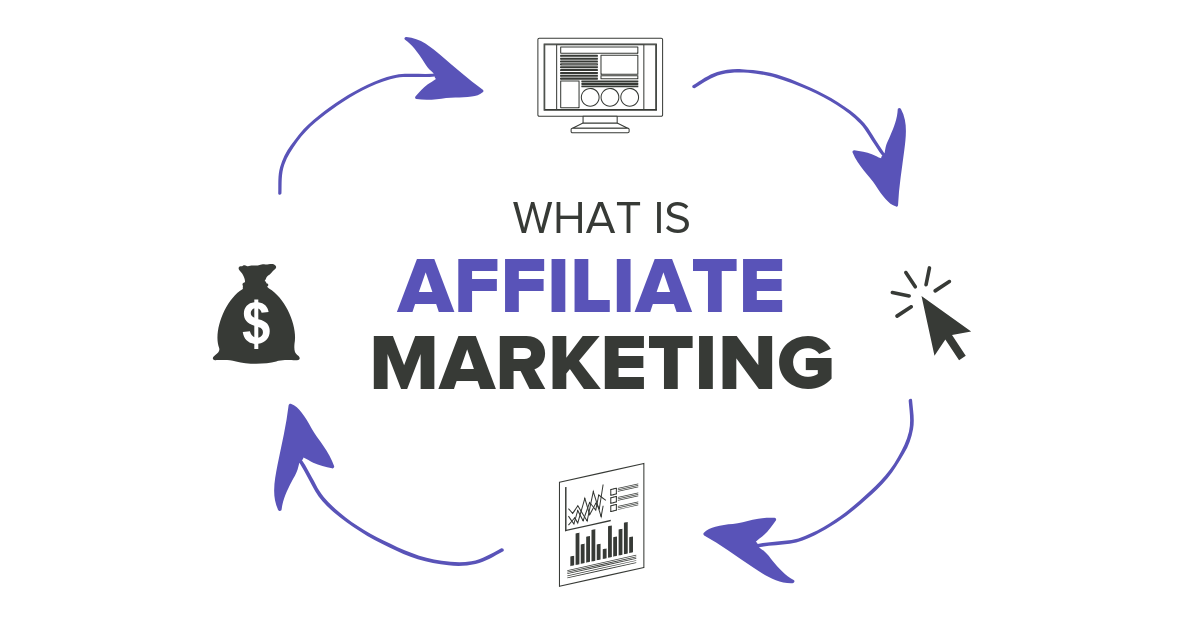Affiliate marketing is one of the most accessible ways to earn money online today. You don’t need your own product, a warehouse, or a customer support team. All you need is an audience and a strategy. Whether you’re a content creator, blogger, YouTuber, or just someone looking to make passive income, affiliate marketing gives you a direct path to monetize your influence.
But what is it really, how does it work, and what does success look like in 2025? Let’s break it all down.
What is Affiliate Marketing?
Affiliate marketing is a performance-based revenue model where you earn a commission for promoting another company’s product or service. You share a unique tracking link, and when someone clicks and makes a purchase through that link—you get paid.
It’s a win-win: the business gets a new customer, and you get a cut of the sale.
Why Affiliate Marketing Matters Now
In 2025, affiliate marketing has matured. With the rise of influencer culture, niche content, and AI-powered personalization, companies are putting more money into affiliate partnerships than traditional ads. According to Statista, affiliate marketing spending in the U.S. will hit $13 billion this year, up from $8.2 billion just five years ago.
People are more likely to trust peer recommendations than corporate pitches. And that’s where you come in.
How Affiliate Marketing Works
-
Join an Affiliate Program – Choose a brand or platform offering affiliate partnerships (Amazon, ClickBank, ShareASale, etc.).
-
Get Your Unique Link – You’ll receive a custom URL that tracks clicks and purchases.
-
Promote the Product – Share your link through blogs, videos, social media, emails, or ads.
-
Earn Commissions – When someone buys through your link, you earn a percentage of the sale.
Common Challenges for Beginners
1. Too Much Focus on the Wrong Products
Promoting high-commission items that don’t match your audience’s needs leads to low trust and poor conversion.
2. Traffic But No Sales
Many affiliates get views or clicks but no purchases—because they haven’t built credibility or properly educated the buyer.
3. Inconsistent Strategy
Spamming links everywhere doesn’t work. Successful affiliates plan content, optimize it for search, and test performance regularly.
Top 5 Affiliate Marketing Tips for Success
1. Pick the Right Niche
Choose something you’re genuinely interested in, and make sure it has both an audience and available affiliate programs.
Example: Instead of “fitness,” go for “home workouts for new moms” or “keto recipes for busy professionals.”
2. Offer Value First, Always
People can spot a cash grab. Your content should genuinely help your audience make informed decisions.
Tip: Create tutorials, product comparisons, or real-use case studies.
3. Build Trust With Consistency
Be transparent that you’re using affiliate links. Readers respect honesty—and the FTC requires it.
Expert quote: “Authenticity sells. People don’t mind affiliate links if you’re upfront and providing real value.” – Jenna Wu, Digital Marketing Coach
4. Focus on Long-Term Platforms
Use platforms where content lasts—like blogs, YouTube, and email newsletters. Social media is fast, but search traffic and email relationships compound over time.
5. Test and Optimize Everything
Use tools like Google Analytics, ThirstyAffiliates, and Hotjar to see what’s working. A headline tweak or button placement can double conversions.
Real-Life Example: How One Blog Made $3,000/Month
Sophia Lee, a college lifestyle blogger, started by writing posts like “Best Planners for Students” and “Dorm Room Essentials.” She linked to products on Amazon and Target using affiliate links.
She:
-
Wrote SEO-optimized posts
-
Used Pinterest to drive traffic
-
Built an email list with a free college checklist
Within 18 months, her blog brought in over $3,000/month in passive affiliate income—mainly from posts written months before.
Steps to Start Affiliate Marketing Today
1. Join 2–3 Affiliate Networks
Start with Amazon Associates, ShareASale, or Impact Radius. Choose based on what fits your niche.
2. Create One Solid Piece of Content
Write a detailed review, a comparison post, or a how-to guide including your affiliate link. Focus on a real problem your audience has.
3. Promote Through One Channel
Pick one platform—whether it’s blogging, YouTube, TikTok, or email. Start small, stay consistent, and build from there.
Conclusion
Affiliate marketing isn’t about quick wins. It’s about building trust, solving problems, and recommending products you believe in. The more value you provide, the more sales you’ll earn—naturally and repeatedly.
Start today by picking a niche, creating one piece of content, and watching how it performs. With time and effort, affiliate marketing can become a steady, scalable income stream.


